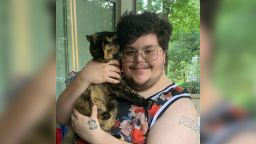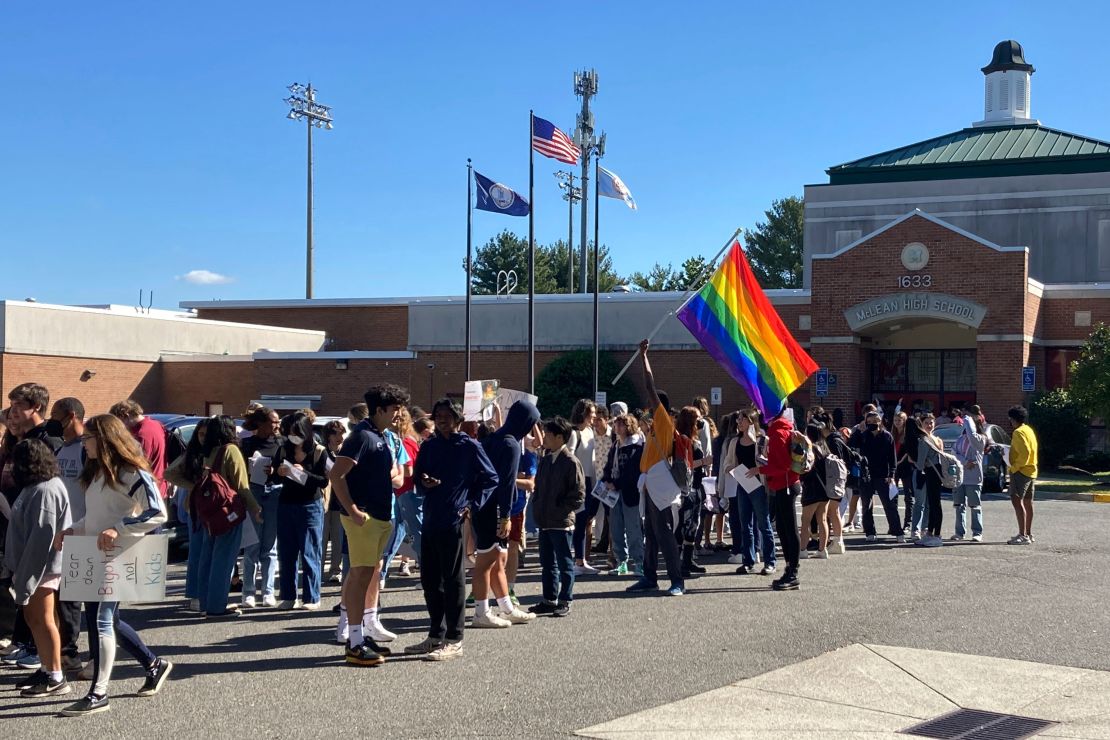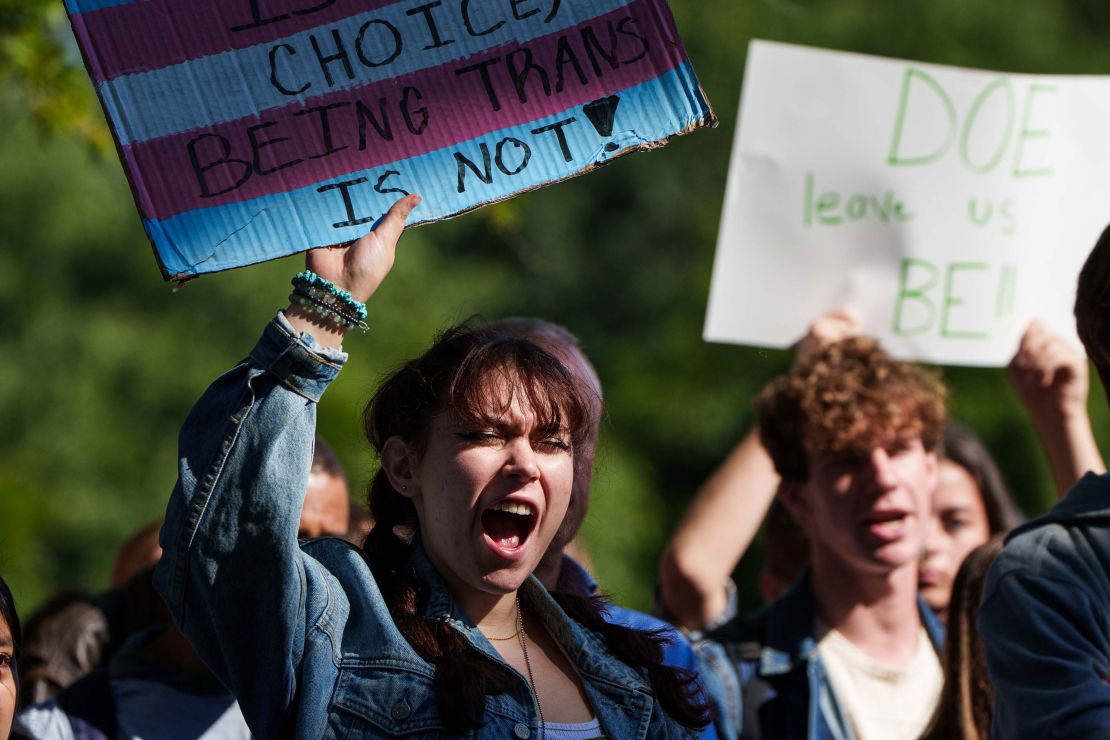Editor’s Note: Gavin Grimm is a transgender activist. The views expressed in this commentary are his own. Read more opinion at CNN.
It is the middle of the academic year in a small town in Virginia. Dozens of speakers have gathered at a school board meeting for their chance to comment on the board’s most burning issue: Where should Gavin Grimm, a transgender boy, use the bathroom?
That was my experience during my sophomore year of high school at the end of 2014, as I continued the process of settling into my full self.

I had become the agenda item and the subject of headlines not just in my hometown, but across the country. At that school board meeting, parents of kids I grew up with were calling me a freak directly to my face – and talking about my genitals in a public forum. That’s how low they were willing to go to inflict hate on a child.
What I experienced seven years ago was not an isolated case. To this day, transgender children no older than I was, and some who are even younger, are being bullied by school systems that are supposed to protect and nurture them, sacrificed in a culture war fabricated by a theocratic Republican party which insists on spouting unfounded claims about transgender students. One of the most common myths is that there is an increased risk of sexual assault in bathrooms (or other single-sex spaces) if trans people are allowed to access facilities aligned with their gender – a lie that continues to be perpetuated.

Struggles similar to mine are still being endured by transgender kids in school across this country. That’s true more than ever in my home state of Virginia, where the state Board of Education has proposed strict new bans on how and where trans kids can participate in school life. Last month, the public comment period for proposed changes in Virginia schools’ policy changes saw tens of thousands of people weighing in. (Officials have announced the new policy won’t take place until the end of this month at the earliest, to afford them the chance to review the comments.)
My activism on transgender rights led me to write a children’s book with co-author Kyle Lukoff called “If You’re a Kid Like Gavin,” detailing my battle for equality and freedom. I’m hoping that even if transgender kids don’t have the support of a loving parent like I did, they’ll see themselves reflected in its pages.
There is no evidence to suggest giving transgender Americans access to the spaces we deserve puts other people at risk. In fact, transgender people are one of the most at risk groups – and are a frequent target of deadly violence. Transgender people over the age of 16 are four times more likely to become the victims of assault than cisgender people. And those attacks are on the rise as Republicans fan the flames of hatred, while Democrats often offer only tepid support.
Even as a high school student, I saw that threats to the lives of trans Americans had reached a dangerous tipping point. I had never wanted to be an activist. I was just a kid. But it felt like the task of spreading greater awareness about a community that had been pushed to the margins fell to me.
I had to do the important work of educating the adults in my world – including those at that school board meeting, some of whom it appeared had never even heard the word “transgender” beforehand. Those people were furious and fearful. They had been served baseless rhetoric that appealed to their biases, and that has grown into a dangerous reality for transgender people in America today.
These dangers are many, and they don’t all come at the hands of a potentially violent aggressor. For example, a report from the Williams Institute at the UCLA School of Law published in March 2022 estimates that 54,000 transgender people between the ages of 13 to 17 were at risk of losing access to gender-affirming medical care amid a flurry of anti-trans bills proposed in statehouses across the US.
These treatments, that have allowed me and other transgender people to become the people we were intended to, have been studied and peer reviewed and are best practices developed by the American Medical Association, American Association of Pediatrics, American Psychiatric Association, the Endocrine Society and other leading health organizations.
Yet, across the country, they are being banned, challenged or indefinitely delayed, while people hoping to transition are put through a series of hoops and hurdles before getting access to treatment.
There are only about 300,000 transgender youth in America and yet, as Republicans obsess over these childrens’ bodies, bomb threats are directed against hospitals and schools. Parents are being reported for child abuse for supporting and loving their children. This assault is being launched on every front.
In the end, my activism – and willingness to fight for my rights – led to my suing the Board of Education in Gloucester County for excluding me from the boys’ restrooms at my school. Gloucester High School had insisted I use the girls’ bathroom, later requiring me to use the bathroom in the nurse’s office.

After wending its way through the system for four years, the courts ruled the school board was in violation of the Equal Protection Clause and Title IX of the US Education Amendments of 1972, a federal law barring schools from sex discrimination.
My case ended in a victory for trans students. The win at the Fourth Circuit level meant that, within the jurisdiction of Maryland, North Carolina, South Carolina, Virginia and West Virginia, the protections afforded by Title IX of the Education Amendments of 1972 include transgender people. The Supreme Court declined to weigh in, allowing the decision to stand. As a result, all schools in the Fourth Circuit were required to adopt a policy in their schools that provided for the needs and rights of transgender students based on the model policies set by the Department of Education.
Or so I had hoped. In fact, appropriate policies were adopted across the Fourth Circuit in response to social change, other court decisions, the tireless work of transgender activists, as well as the outcome of my case.
But last year saw the election of Virginia Governor Glenn Youngkin, a Republican who ran on a platform that included blatant misinformation and targeted attacks against marginalized communities.
Under his administration’s proposed guidelines, transgender students would only be permitted to use their correct name, pronouns and facilities if a parent requests so in writing. Even then, the measure does not contain any language that mandates schools approve such requests. This excludes children who are not “out” to parents or guardians for safety concerns or other reasons, or whose parents or guardians are not supportive.
And notably, Virginia’s model policy contains language permitting schools to go beyond the guidelines and institute even more restrictive rules, saying “Each school board shall adopt policies that are consistent with but may be more comprehensive than the model policies developed by the Virginia Department of Education.”
Get our free weekly newsletter
- Sign up for CNN Opinion’s newsletter.
- Join us on Twitter and Facebook
It seems as if Gov. Youngkin is willing to reject not only established federal and state law, but also guidance and best practices from leading authorities on the physical and mental health of children and young adults. Youngkin and his administration have couched discriminatory actions in language about protecting children, religious liberty and the rights of parents, but it is my belief that his real agenda is scapegoating a minority already under duress, in a cowardly bid to gain support from his base.
He may succeed in that, but his gains will be temporary. A few weeks ago, thousands of students across Virginia walked out of school to protest Youngkin’s proposed restrictions on trans students. Protests are continuing against this unjust proposed policy. The transgender community is not going away.
We are still fighting, and we will win.







